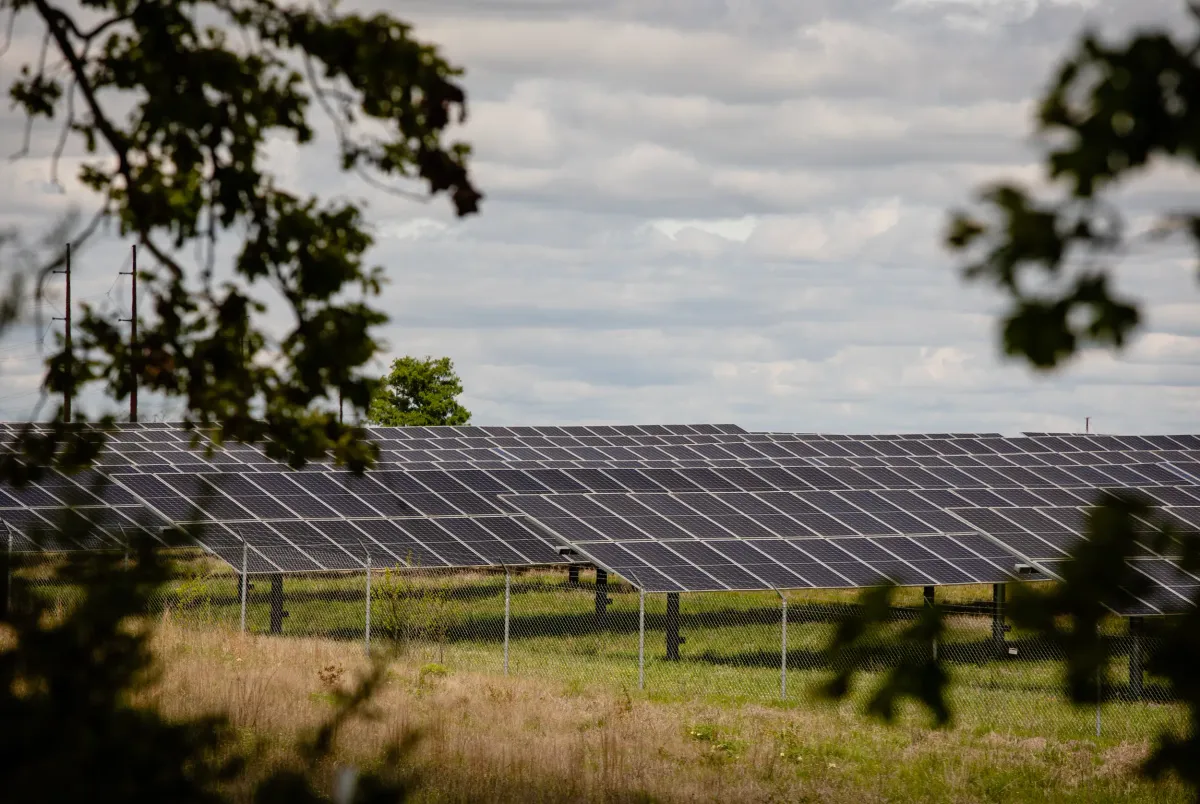Texas has gone big with renewable energy. Why can’t it go all the way?
The biggest barriers to making Texas’ power grid 100% renewable have little to do with politics.

Published in the Texas Tribune
Texas leads the nation in renewable energy. Solar, wind and other renewables exclusively power businesses, colleges and even one town in the state.
So, why can’t the state simply continue that trend and run on 100% renewable energy?
Like any long-term relationship, it’s complicated, especially for a state that is rooted in fossil fuels.
“One side certainly has a longer history and is potentially better connected,” said Felix Mormann, a professor at Texas A&M University’s Engineering Experiment Station, of the state’s long history with natural gas and other fossil fuels. “But the future belongs to the other side.”
State lawmakers don’t see it that way, it would appear.
They are instead pushing bills that would turn back some of that effort toward decarbonization by creating new financial incentives for natural gas power plants to be built. They consider the gas plants the answer to having easily accessible emergency electricity at the ready if a storm akin to February 2021 happens again. During that winter storm, named Uri, roughly 4.5 million Texans lost power for several days, hundreds of people died, and the state’s electric grid was pushed to the brink of collapse.
Energy experts say the Legislature’s solution is possibly no solution at all: Natural gas plants struggled the most during that storm, according to several analyses.
Yet Texas can’t simply go “all renewable” because economic, technological and regulatory barriers remain, including the nation’s largest backlog of renewable projects waiting to be connected to the state’s main grid. What’s more, observers say, the power industry is rooted in a 100-year-old business and infrastructure model and has been reluctant to change.
“Building a small number of power plants is something that you can easily conceive in your head instead of getting people to do something different,” said Carey King, a research scientist at the University of Texas’ Energy Institute.
Texas appears to be at an energy crossroads in which reliability is at the center of the debate. The fight will only get worse as climate change makes extreme weather events more frequent and catastrophic.
Reliability means “build more power plants” to most elected officials, said Michael Webber, an energy expert and mechanical engineering professor at the University of Texas at Austin. And when the power sector hears that, he added, utilities think natural gas.
“I think (the utilities) are pretty biased toward natural gas” because it is easier to add and to use on the electric grid, Webber said.
Pitting renewables against fossil fuels is misguided, energy experts say, because traditional fossil fuels power plants and renewable energy don’t operate the same way.
“It’s operationally different to have wind and solar, it’s complicated grid management,” Webber said.
What’s more, it would take at least a decade to get from the state’s current 25% level of renewable power on its grid to 100%, one Wall Street analyst said. The federal Energy Information Administration supports that premise.
“Renewables are such a small part of the energy mix in the U.S. right now, that to meet reliability (requirements), we do need natural gas generation,” said Travis Miller, an energy and utilities strategist for Morningstar Research Services LLC.
Eventually, solar and wind projects will be paired with batteries or other forms of storage that will allow renewables to provide power more consistently, Miller said. Storing solar and wind power is prohibitively expensive now, so renewables still can’t provide electricity 24/7 like gas-fired power plants can, according to Wall Street analysts and the EIA.
New federal tax breaks will accelerate the transition to more storage of renewable power, said Emily Fisher, executive vice president of clean energy and general counsel for the Edison Electric Institute, the trade group for the nation’s investor-owned electric companies, which holds significant political sway in Washington and state capitals. Members in Texas include AEP Texas, Centerpoint Energy, Entergy Texas and Oncor.
To be sure, other options are available to create a more renewable grid, but significant regulatory and cost barriers come into play, Webber said. The largest of those barriers is a lack of transmission.
Transmission lines are critical to move renewable electricity from the rural areas where it is largely produced to cities and towns where it is needed. But it can take years for a transmission line developer to secure key environmental and regulatory permits before the proposal hits its last stop: the Federal Energy Regulatory Commission.
By the time a project reaches final approval at the federal agency, the environmental and engineering studies for initial planning and siting stages may have expired, which means those studies have to be done again, driving up the cost of a transmission project and sometimes dooming it.
Texas has the largest backlog of renewable energy projects that have yet to be connected to the power grid for this reason, according to findings from the Lawrence Berkeley National Lab. In the meantime, the queue of projects waiting to be connected is growing.
It’s even more difficult to build transmission lines to connect Texas to other states in order to import renewable power.
“There’s a variety of barriers, so they default to whatever they did last year, they’ll do this year,” Webber said. “Option A is to build power plants for reliability.
“Option B is to build power plants and transmission and storage,” Webber said. “If you use a mix of tools, you can fine-tune your solution.”
Floodlight depends on a community of readers like you who are committed to supporting nonprofit investigative journalism. Donate to see more stories like this one.


